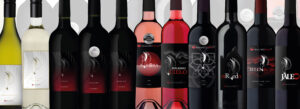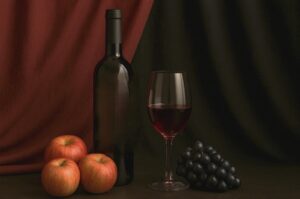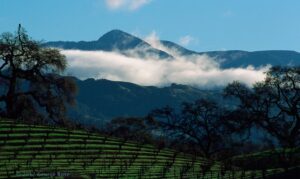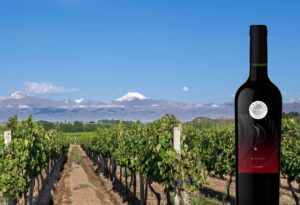
Every Year, Wine lovers look forward to tasting the first wines from Beaujolais. A Wine investment tradition started in a small French region with international acclaim.
New Wine Vintages
Beaujolais Nouveau is a fresh and fruity new wine, known for its early release each November. It is a symbol of the excitement surrounding new wine vintages. The wine market is in apprehension over concerns of climate-related fears for these new vintages.

The Beaujolais Nouveau tradition: an early taste of the year’s harvest, is produced using a unique winemaking technique called carbonic maceration. Whole grape clusters are fermented in a carbon dioxide-rich environment.
This process limits tannin extraction and results in a fresh, fruity wine ready to drink shortly after fermentation. This wine is typically made from Gamay grapes. The whole grape clusters are carefully selected to preserve this new wine’s characteristics.
Excitement: New Wines
Tempered by growing fears over climate change’s impact on wine production and unstable growing conditions, both producers and consumers are shifting attention to more resilient regions like Europe and South America, which are currently experiencing more stable climates for wine production.
Increased Demand for Spanish, Italian and Portuguese Wines
European countries offer new vintages as consumers diversify in taste and demand by young investors increases hold on the wine markets.

New Vintages: Release Dates
Collectible wines from Spain and Argentina, are driving excitement in the wine market, where wines for short-term enjoyment and long-term aging can be acquired, depending on the variety and production style.
Stewart Hill Wines: Spanish wines

Grenache, Tempranillo and such as Rioja and Ribera del Duero offer a range of aging options, from young and fruity: Joven, pronounced ‘Hoe-Ven’, to Gran Reserva wines that are aged for several years.
The winemaking process in Spain often involves oak aging, which enhances the flavor profile with notes of vanilla and spice. Argentina, known for its Malbec, benefits from high-altitude vineyards in the Andes, which provide ideal conditions for balanced acidity and robust flavour development.
As a result, Argentina and Chile, which benefit from cooler coastal climates and fewer climate disruptions, are also becoming focal points in the international wine market.
The Growing Demand for Diversity
In response to a growing demand for diversity in the wine market, consumers are increasingly curious about wines from different regions. This trend is further supported by advancements in global distribution, making it easier to access wines from these emerging regions. With their stable climates and distinct winemaking styles, Spain and Argentina allow consumers to experience new flavour profiles, creating more opportunities for recognition, ultimately broadening the world of wine.
Point of View: Beaujolais Nouveau
The Gamay grape, notably used in the Beaujolais region of France, shares some appealing qualities with Grenache, particularly in its fruit-forward profile and vibrant red berry notes, making it approachable and attractive to younger wine enthusiasts, including Gen Z and millennials.

Willingness to explore new wines, support sustainable brands, and participate in wine futures reflects a more dynamic, tech-driven approach. This is transforming both the wine industry and the broader agribusiness sector.
While distinct, both Gamay and Grenache are known for producing wines that are lively, aromatic, and versatile, with appealing soft tannins for those who may have just joined the wine sphere. If you prefer lighter, more drinkable styles; Gamay, especially through the lens of Beaujolais Nouveau, offers a youthful, juicy sip that is ready to drink soon after production. This is great for a generation interested in high-quality informal wine experiences.
New consumers are increasingly adventurous with wine, exploring and embracing both the social and investment aspects of the industry.
They view wine not only as a beverage but as an experience, part of an exploration into culture, history, and taste. Gamay’s fruity, refreshing character often appeals to newer wine drinkers. It is an accessible introduction to reds that pairs well with a wide variety of foods.

The Grenache grape, known for its bold, exiting appeal in our wines from Spain, gives young consumers the chance to explore deeper flavours because it has more body than Gamay, the traditional Beaujolais Grape.
Invest in Wine Futures
Young wine enthusiasts are breaking down boundaries, by exploring wine futures. Traditionally associated with Bordeaux, wine futures allow buyers to invest in a wine before it has been bottled and secure top vintages at pre-release prices. This appeals to new investors who may see wine as a unique asset class. It is a chance to blend passion with profit potential. Unlike more traditional assets, wine offers the allure of tangibility and cultural value. This is attractive in a financial landscape where investors are looking for alternatives to stocks and bonds.
Fractional ownership: Smaller budgets
Wine investment platforms are emerging, accessible to tech-savvy investors. Companies focused on wine investment—some of which operate like trading platforms for fine wine—offer This modern approach aligns with the financial habits of new investors, who value digital accessibility and transparency. Plus, the environmental consciousness of Gen Z and millennials lead many to support wineries that practice sustainability; organic farming, eco-friendly packaging, or carbon footprint reduction.
Wine Investor Agribusiness Interest: Changes
Agricultural groups now invest in technologies that improve vineyard management, sustainability, and production quality, addressing the concerns of investors and consumers alike. This dual sided interest in innovation reflects a recognition of shifting consumer demands and the need for resilience in the face of climate change.
- Agricultural investment groups; recognise wine’s potential for stable, long-term growth
- Traditional investors who overlooked wine assets are now seeing a viable option
Agribusinesses and even private equity firms are buying up vineyards or creating funds focused on fine wine and premium vineyard properties. Part of this growth is tied to climate change, as investors seek land in historically undervalued regions, like Spain, Argentina, and Chile, that may become more valuable as traditional wine regions face environmental pressures.
Go Global: Tech Industry Trends and Challenges
The luxury wine market, is subject to macroeconomic factors and category dynamics that present both opportunities and challenges. Recent industry trends have shown softness in category growth. This coupled with inventory reductions at the distributor level.
Any company’s ability to navigate these industry headwinds will benefit its future performance.
Distribution Strategy and Acquisitions
Recent strategic changes in distributor relationships and the acquisitions have achieved favorable terms with new distributors. This contributes to improved profitability. Any acquisition anticipates synergies and expansion of presence in the luxury wine segment.
B2B Company long-term outlook is positive, with potential distribution gains and opportunities to cross-sell between brands. However, the near-term impact of distributor changes and integration are important factors.
The luxury wine market is not immune to broader economic trends. Consumer discretionary spending on premium products like luxury wines may decrease. During economic downturns or periods of uncertainty. This could impact sales volumes and pricing power.
Inflationary pressures increase production costs and squeeze margins where companies need to pass these costs on to consumers and not affect demand. Recent guidance suggests that these macroeconomic factors are already influencing performance.
B2B, Dtc, B2C:
Risks v. Changing Relationships
Changes in relationships, while potentially beneficial in the long term, carry short-term risks. The transition can result in temporary disruptions to a company’s sales channels and inventory management.
There could be a learning curve as new distributors familiarise themselves with product portfolio and target markets.
Consistent market share gains in the luxury wine segment, position companies for favorable growth:
- Gaining shares
- Demonstrating ability
- Outperforming competitors
- Capturing a larger portion of the market
This trend could lead to increased wine brand recognition, customer loyalty, and pricing power.
The luxury wine market often benefits from upgrading
Higher-quality, more expensive wines hold a strong position in this segment. To allow capitalisation on such trends, drive growth and expansion. Furthermore, gains in market share may benefit from economies of scale in production and distribution. This further enhancing profitability.
Integrate shared portfolios and cross promotion for global synergies which could plant seeds for a grand cru of spectacular wine future yields.
Plan: Leverage existing distribution networks to expand market reach and cross-selling between brands. This will capture a larger share of client budgets with diversification, potentially reducing risk nd providing new avenues for growth in the luxury wine market.
Links:
https://www.raconteur.net/infographics/wine-around-the-world






